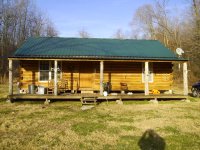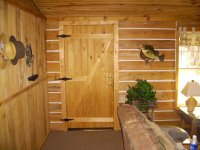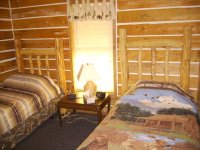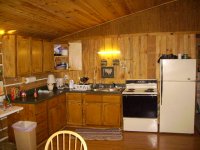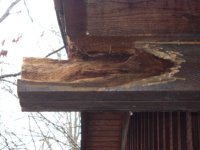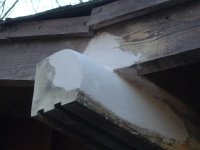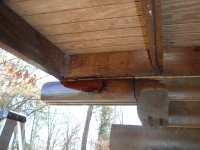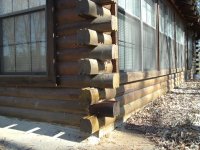TNhobbyfarmer
Veteran Member
- Joined
- Dec 23, 2004
- Messages
- 1,172
- Location
- Middle Tennessee
- Tractor
- Kubota L3430 Polaris Ranger 500
I built a 36X28 pine log cabin about 5 years ago. It is my hunting cabin/getaway, not my primary residence. I felled the logs myself and had a local guy with a potable sawmill come in and saw the logs into 6X7 rectangles. I put 2 parallel strips of 1X2 between each course and chinked between the logs. I just like the chink look plus adding 3/4" to each course eliminated a course of logs. I also fastened each course of logs to the one below using the oly-log screws. I would highly recommend those type fasteners. They surely make a sturdy structure.
Building the cabin was hard work but a labor of love. It was slow going just working on weekends, but I wouldn't take anything for the experience. It is quite satisfying using and enjoying the fruits of my labor.
One thought regarding using oak. I agree that I don't think it is the best choice of materials. I think it will be much harder to work with than a softer wood like pine. You will notice that almost all of the log home companies use some sort of pine, although there is one that I know of that uses oak. I think they are called Gastineau Log Homes out of MO if I remember correctly. I have seen their adds in log home magazines.
I am not a building trades craftsman and only mildly handy so completing such a project without much input from people more knowledgable is somewhat a miracle. That's what makes it such a satisfying experience.
Here are some pics. In one of the pics is a door I made out of tongue and groove 2X4s. I made the headboards out of limbs off the pine trees. The interior walls are skinned with random width 1 bys cut at the same time as the logs were being cut on the sawmill. The ceiling is 1X6 tongue and groove pine bought commercially.
Building the cabin was hard work but a labor of love. It was slow going just working on weekends, but I wouldn't take anything for the experience. It is quite satisfying using and enjoying the fruits of my labor.
One thought regarding using oak. I agree that I don't think it is the best choice of materials. I think it will be much harder to work with than a softer wood like pine. You will notice that almost all of the log home companies use some sort of pine, although there is one that I know of that uses oak. I think they are called Gastineau Log Homes out of MO if I remember correctly. I have seen their adds in log home magazines.
I am not a building trades craftsman and only mildly handy so completing such a project without much input from people more knowledgable is somewhat a miracle. That's what makes it such a satisfying experience.
Here are some pics. In one of the pics is a door I made out of tongue and groove 2X4s. I made the headboards out of limbs off the pine trees. The interior walls are skinned with random width 1 bys cut at the same time as the logs were being cut on the sawmill. The ceiling is 1X6 tongue and groove pine bought commercially.
